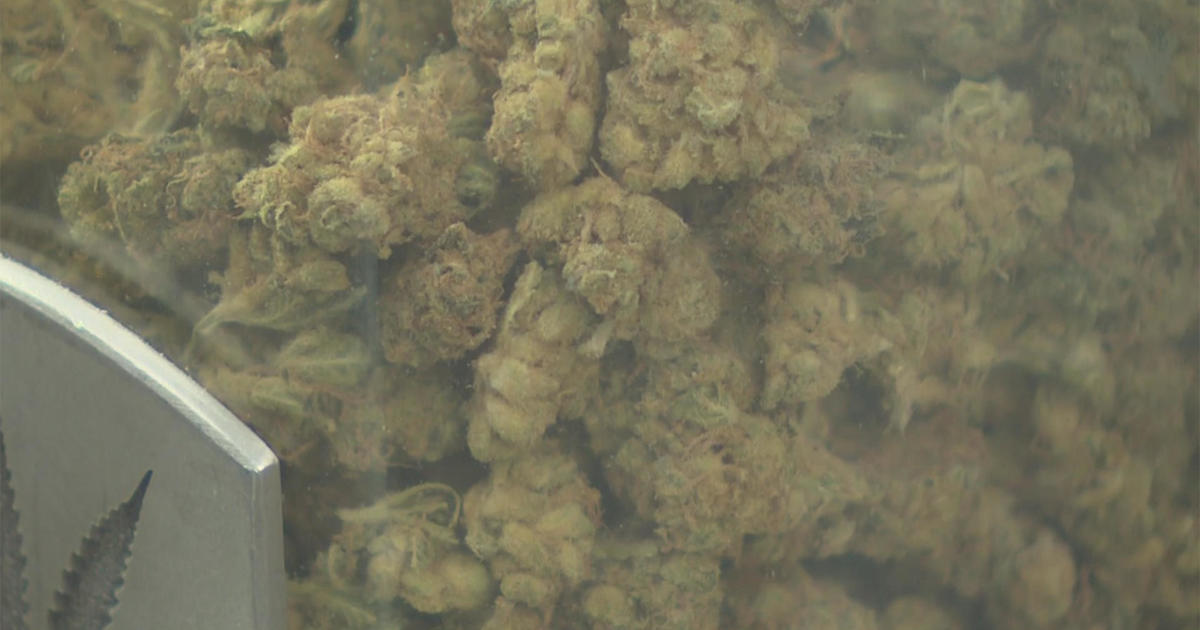How Much Radiation Are We Getting At Airports?
DENVER (CBS4/CBS News) - Denver International Airport has what are called, millimeter wave technology machines. They use the same type of waves used by a cell phone. What's the risk there? Well considering the amount of energy is thousands of times less than a cell phone transmission -- we'll let you judge.
More troubling to some are the backscatter machines used in about half of the nation's 69 airports that have imaging technology. That's 211 backscatter machines. CBS4 asked a local expert about the machines. Dr. Chuan Li, a professor of cancer biology at University of Colorado School of Medicine says most people probably already know about ionic radiation.
"The most common things I would say are the medical diagnostic exposures," Li said.
X-rays and CT scans -- it's known that ionizing radiation can damage human cells by sending electrons flying.
So our DNA is a long chain and the electrons come at it and potentially break it in different places," Li said. "Yes, that's now ionizing radiation damages DNA.
But our bodies are built to repair that damage at low levels we are constantly getting from space above us, or from radon in the ground below us. And because it comes in from on high, in Colorado we regularly deal with more of it than people at lower altitudes.
CBS News asked leading radiation safety experts from MIT and the respected Health Physics Society for the real scoop on radiation levels from the new scanners and 12 other every day radiation sources, many of which you probably never thought about.
One scan from a typical "backscatter" security scanner might deliver 0.005 to 0.01 millirem - far, far below the 10,000 millirem that is considered the danger threshold.
"There is no known risk" from being scanned, Dr. Francis Marre, former director of radiation safety at the Massachusetts Institute of Technology, told CBS News. "It's never been demonstrated."
It turns out that pure drinking water contains trace amounts of radium and other radioactive elements. Drinking three glasses of water a day for a year might give you a cumulative exposure of about 0.045 millirems, that's at least five times more than the dose from an airport scanner.
But keep in mind, it's still way beneath the 10,000 millirem line where there is danger.
Some buildings are made with stone known to emit tiny amounts of radiation. Case in point: New York's landmark train station, Grand Central Terminal. Wait for your train for an hour there, and you might be exposed to about 0.06 millirem, at least six times more than an airport scanner.
Power plants are permitted to emit tiny quantities of radiation. In fact, government says people living within 50 miles of a nuclear power plant can be exposed to up to 0.1 millirem daily.
And because coal contains traces of radioactive substances, coal-fired power plants emit radiation too. In a recent test, people living within 50 miles of a coal-fired plant in Wyoming were shown to be exposed to 0.16 millirem.
No matter where you live, you're exposed to low levels of "background" radiation -- from air, soil, water, and cosmic radiation that bombards the earth from outer space.
In New York City and other communities at or near sea level, you might get about 0.8 millirem a day, at least 8 times the dose from airport scanners.
At higher elevations, the cosmic radiation is more intense - because there's less atmosphere above to shield you. In the "mile-high" city of Denver, for example, you might be exposed to 0.9 millirems a day.
One panoramic X-ray might deliver 2 millirem. Conventional dental X-rays deliver considerably less - about 0.5 each, both are much more than an airport scanner.
Believe it or not, the human body emits radiation. That's because it metabolizes potassium, and the potassium found in bananas and other foods and water contains radioactive as well as non-radioactive atoms.
One year of bedding down with someone else might expose you to 2 millirems, at least 200 times the dose from an airport scanner.
For many radiation experts the argument over airport scanners makes no sense since the radiation received from flying in the plane is much higher.
That's because cosmic radiation to which we're all exposed every day gets more intense the higher you go. If you climb a mountain or go up in an airplane, your exposure will be elevated.
Taking a flight from New York to Los Angeles might expose you to between 3 and 4 millirems, at least 300 to 400 times higher than the airport scanner.
To put that level into context, one minute of flying at 35,000 feet might expose you to as much radiation as you'd get from one airport scan.
A typical chest X-ray delivers about 10 millirems. An X-ray of the hips might deliver eight times as much. That's because the bones are bigger and so require more radiation to produce good images.
Again, its all far more than an airport scanner.
A standard four-image mammogram (two views of each breast) delivers about 13 millirems, at least 1300 times as much as the airport scanner.
Planning to spend some time in Earth orbit? If so, you should know that astronauts get exposed to quite a bit of cosmic radiation. How much? One day of orbiting at 335 miles - typical for the Space Shuttle - could deliver 200 millirems. That's at least 20,000 times the dose from an airport scanner.
Doctors use ultrafast computed tomography (CT) to check for calcium in the coronary arteries - a red flag for heart disease. The scans can be life-saving but they come at a cost, radiation-wise. One scan can deliver 400 millirems.
How about a CT of the abdomen? That can deliver about 1,000 milirems. That's at least 100,000 more juice than an airport scanner.
A single coronary angiogram - in which doctors X-ray the heart after it's been infused with dye - can deliver up to 1,600 millirems. Of course, that might save the life of someone whose coronary arteries are dangerously clogged.
Currently there are over 400 imaging technology units at 69 airports and 221 are "backscatter" units. DIA has six machines -- all of those are millimeter wave technology.
Additional Resources



